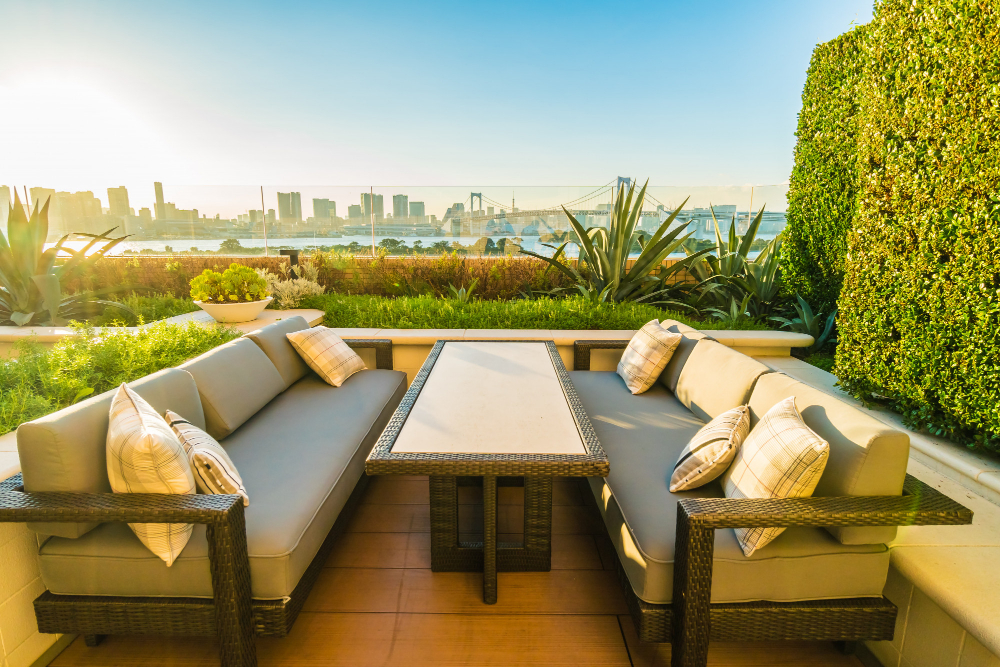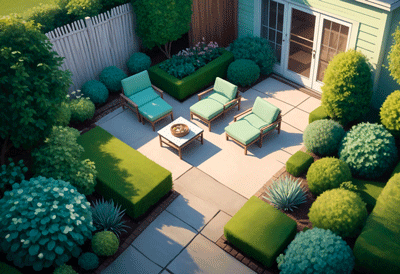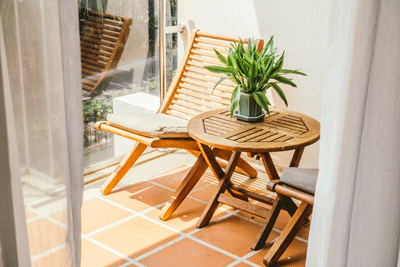
Interior & Exterior Design
Rooftop Garden Design
Essential Tips for Designing a Stunning and Functional Rooftop Garden
A rooftop garden is a unique opportunity to create a private oasis above the city. It requires careful planning to balance aesthetics, function, and structural integrity. The goal is to create a seamless extension of the interior living space into the open air.
1. Start with a Professional Assessment and Planning
This is the most critical, non-negotiable first step.
Structural Capacity: Hire a structural engineer to determine the load capacity of your roof. This dictates everything—soil depth, planters, furniture, and the number of people. Remember, saturated soil and snow are very heavy.
Waterproofing and Drainage: The roof’s waterproofing membrane must be intact and robust. A professional must ensure that your design will not compromise it. Proper drainage is essential to prevent water pooling and leaks. Drainage layers and a root barrier (for intensive gardens) are often required.
Access and Logistics: Consider how materials (soil, planters, furniture) will be brought up. Is the elevator or stairwell large enough? Also, plan for easy access for future maintenance.
2. Define the Purpose and Create Zones
Like any room, a rooftop garden should have a clear function.
What is its primary use? Is it for entertaining large groups, intimate dining, quiet relaxation, growing vegetables, or a playful space for kids?
Create Distinct Zones: Use furniture, planters, and changes in flooring to define different areas:
Dining Zone: A table with chairs, possibly under a pergola for shade.
Lounge Zone: Comfortable sofas, armchairs, and a coffee table.
Green Zone: Dedicated areas for planting beds, containers, or a vertical garden.
Service Zone: A discreet area for storage, composting, or a tool shed.
3. Master the Layout and Circulation
Traffic Flow: Create clear, logical pathways that connect the different zones without forcing people to walk through a seating area. Leave at least 3 feet (90 cm) for main walkways.
Leave Open Space: Avoid cluttering the entire terrace. Open spaces make the area feel larger and more restful.
Consider the View: Frame the best views and screen the undesirable ones. Place seating to take advantage of sunsets or cityscapes. Use taller plants or screens for privacy from neighboring buildings.
4. Choose the Right Plants and Planting System
The rooftop environment is harsh: windy, sunny, and with extreme temperature fluctuations.
Plant Selection is Key: Choose plants that are:
Wind and Sun Tolerant: Ornamental grasses, sedums, lavender, salvia, and certain hardy perennials.
Drought-Resistant: Once established, these require less watering.
Lightweight (where possible): Use potting mixes with perlite or vermiculite.
Planting Systems:
Containers and Planters: The most flexible option. They come in various sizes, weights, and materials. Ensure they have drainage holes.
Green Roof (Extensive): A lightweight system with a shallow soil depth (2-6 inches) for sedums and mosses. Excellent for insulation and ecology.
Raised Beds: Deeper than containers, good for vegetables and larger perennials.
Vertical Gardens: Perfect for maximizing green space without using floor area. They often have integrated irrigation.
5. Incorporate Hardscaping and Flooring
The floor surface sets the tone for the entire garden.
Lightweight Materials: Avoid heavy materials like natural stone or thick concrete pavers. Opt for:
Composite Decking: Light, durable, and low-maintenance.
Porcelain Pavers: Dense but thin, and very durable.
Wood Decking (on a raised pedestal system): Allows for a level surface and drainage underneath.
Rugs and Mats: Use outdoor-rated rugs to define zones and add color and softness underfoot.
6. Design for Comfort and Shelter
To make the space usable in all weather conditions, provide protection.
Shade Solutions: Essential for comfort. Options include:
Pergolas: Can support climbing plants or shade cloth.
Retractable Awnings: Offer flexible shade control.
Market Umbrellas: Portable and easy to reposition.
Shade Sails: Modern and stylish.
Wind Protection: Use glass balustrades to preserve views while blocking wind, or permeable screens (lattice, slatted wood) that filter wind rather than creating a turbulent downdraft.
Weatherproof Furniture: Choose furniture made from teak, powder-coated aluminum, synthetic wicker, or HDPE lumber that can withstand the elements.
7. Layer the Lighting for Ambiance and Safety
Extend the use of the garden into the evening.
Ambient Lighting: String lights or lanterns create a magical, soft glow.
Task Lighting: Small LED lights under a pergola or integrated into steps for safe movement.
Accent Lighting: Uplighting in planters to highlight architectural plants or a textured wall.
Safety Lighting: Ensure all pathways and steps are clearly illuminated. Use low-voltage LED fixtures for energy efficiency.
8. Integrate Practical Amenities
Small details make a big difference in usability.
Water Source: Install a weatherproof tap for easy watering. Drip irrigation systems on timers are a huge time-saver.
Storage: A weatherproof storage bench or box is essential for storing cushions, tools, and toys.
Heating: A portable propane fire pit or an outdoor-rated electric heater can extend the garden’s usability into cooler seasons.
Cooking/Kitchenette: For serious entertainers, a simple built-in grill or a mobile pizza oven can be a fantastic addition.
Common Rooftop Garden Design Mistakes to Avoid
Ignoring Weight Limits: The #1 mistake. Overloading the roof can have catastrophic structural consequences.
Forgetting the Wind: Placing lightweight furniture or umbrellas without a windbreak will lead to them being damaged or blown away.
Poor Plant Choices: Selecting delicate, shade-loving plants for a windy, sun-baked rooftop will result in failure.
Neglecting Privacy: Not screening the space from neighbors can make it feel exposed and unusable.
Skipping Professional Help: Attempting complex waterproofing or structural modifications without expert guidance is a recipe for costly leaks and damage.
In summary, a successful rooftop garden is a carefully engineered outdoor room. It is a sanctuary that blends the raw beauty of nature with the comfort and style of interior design, all while respecting the practical and structural constraints of its unique location.






